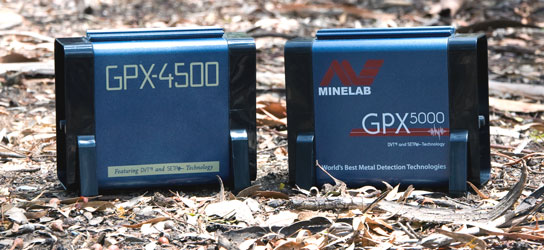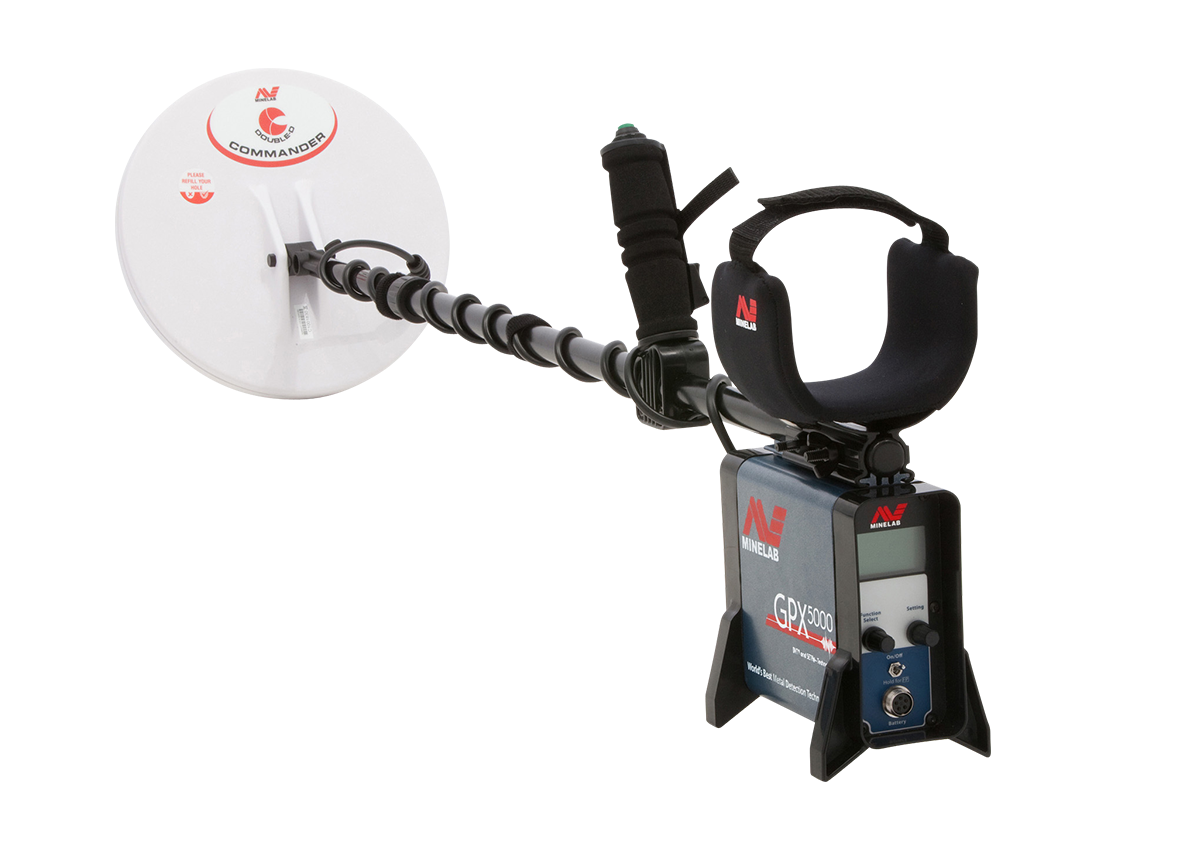When the GPX 5000 metal detector was released, some existing GPX-4500 users questioned whether it was just a GPX-4500 with a new Timing for very small gold, and a make-over in the colour department. While these improvements were true, the GPX 5000 has a few extra tricks up its sleeve!
Gain
One notable change is the Rx Gain now has a range of 1 – 20, compared to 1 - 15 on the GPX-4500. This has been implemented by putting finer adjustment steps in the middle of the range, (approx. between 6 - 12 on the GPX-4500), to allow for a more precise setting. So a GPX-4500 owner upgrading to a GPX 5000 needs to forget about their preferred Gain levels, and simply adjust it as required to suit the conditions. My tip is to just use your ears for a while and ignore the numbers.

Fine Gold vs. Enhance
The GPX 5000 now boasts a total of 8 Timing options, which gives the detector fantastic versatility in different soil types. I discussed the benefits of the Salt-Gold Timing in a previous blog (see here), so here’s some info on the much talked about Fine Gold.
After a season on the goldfields, the new Fine Gold Timing has well and truly proved its worth, and unlike the initial perceptions that it was only good for small shallow nuggets, prospectors have realised that it is also capable of some impressive depth. Fine Gold can be susceptible to EMI (particularly when using medium to larger Monoloop coils), but this is due to the sensitivity and overall power of the Timing. So if your threshold has the jitters, and doing an Auto Tune doesn’t help, don’t be shy to turn the Rx Gain down; even with the Rx Gain on 5 (out of 20), you will still be capable of good depth.
It is important to realise that your Timing selection and the diameter of your coil’s Transmit winding have a greater bearing on your overall depth potential, than the Rx (Receive) Gain setting does.
If you are a GPX-4500 user and are curious about the Fine Gold Timing, you can think of it as a bit of a hybrid. It has the sensitivity of Sensitive Extra (well almost), the depth of Normal (on small-medium nuggets), and about 95% of the ground cancelling properties of Enhance – it is almost the perfect all-round Timing! As good as Fine Gold is in most mineralised soils, there are still areas where it will be slightly affected by heavy mineralisation, so if a GPX 5000 user still wishes to keep using their Monoloop coil in these areas, dropping back to Enhance Timing usually does the trick.
Setting the Rx Gain and Stabilizer
On the GPX-4500, many operators got into the habit of dropping their Stabilizer down a couple numbers, and then pushing the Rx Gain a couple numbers higher. Now I wouldn’t recommend this practise in all conditions, but when using Enhance with medium to large sized Monoloop coils, this combination was often the right thing to do. In my experience, the GPX 5000 is a little different. Due to the overall quieter running of the GPX 5000, but the extra punch/sensitivity of Fine Gold, I find my settings tend to have a lower Rx Gain (9 or 10), Stabilizer +/- 1 from the factory setting, and a Target Volume of 9 - 11 (higher if using external speaker). Also on the GPX-4500, due to the often soft response on a borderline target I’d tend to run the Signal Peak on 19 or 20, but on the GPX 5000 (particularly when using Fine Gold) I find myself running it on 18. So the settings aren’t radically different, but every little tweak combined does make a difference in overall performance.
These settings will work well on most ground types and will punch down on deeper gold, yet still have good sensitivity to small targets. Obviously in quieter conditions you can run a higher Rx Gain, and in more severe soils you will need to turn it down along with the Stabilizer if needed, but the above is a good starting point in many different areas.
Nenad Lonic





















Comments
1) Assume Fine Gold Timing: in fine tuning the ground balance, gain, and Stabilizer, is there a 'do it once' order that sets the unit optimally, or do I need to repeat the procedure more than once to arrive at optimal settings. In other words, for instance, if the proper order of adjustment is as above, after adjusting gain and stabilizer, wouldn't it be desirable to re-ground balance, and then again seek improved gain and stabilizer settings, ending after there are no more gain and stabilizer changes, but frequently checking ground balance thereafter, and occasionally checking to ensure stabilizer is good, and if not checking gain, then working the adjustment loop again until all is properly aligned to conditions?
2) Suppose I'm in Fine Gold, and have been steadily reducing gain and stabilizer (ie, numerically lower, I think the scale is reversed from what the name implies) in search of stability. How do I know when/if I reached a point where switching to the next smoothest Timing (at higher gain and stability) would provide better performance?
1. Yes spot on! Regardless of your settings, if you are searching in Fixed GB, you should re-balance quite regularly. Only when your ground balance is set perfectly will you know if you need to lower your Rx Gain, or possibly increase it.
You should also stop swinging the coil and listen to your threshold and note any instability - this will be due to EMI. Always try to tune this out with the Auto or Manual Tune, BEFORE lowering your Gain or Stabilizer.
2. Yes, just think that increasing the setting improves the target signal but also noise. Lowering the settings reduces the target signal but also reduces any noise, making a faint signal easier to hear. What you are looking for is the optimum signal:noise ratio. But I don't recommend lowering both your Rx Gain and Stabilizer at the same time. Leave Stabilizer on the factory setting for the particular Search Mode you are in, i.e. General, and set your Rx Gain first. Then fine-tune using the Stabilizer.
Now to the second part of your question, there's no real rule regarding when you go to the next Timing. Use what works. If you are using Fine Gold, and running Rx Gain on 6 and Stabilizer 8 and it is working nicely, then keep using it. If you get into really hot ground and have to reduce the Gain to 4, it will probably still work okay, but personally I think that's about the time I would try Enhance. However, just remember that if you are reducing the Gain because of EMI, then you may want to think about dropping your coil size first.
Best of luck!